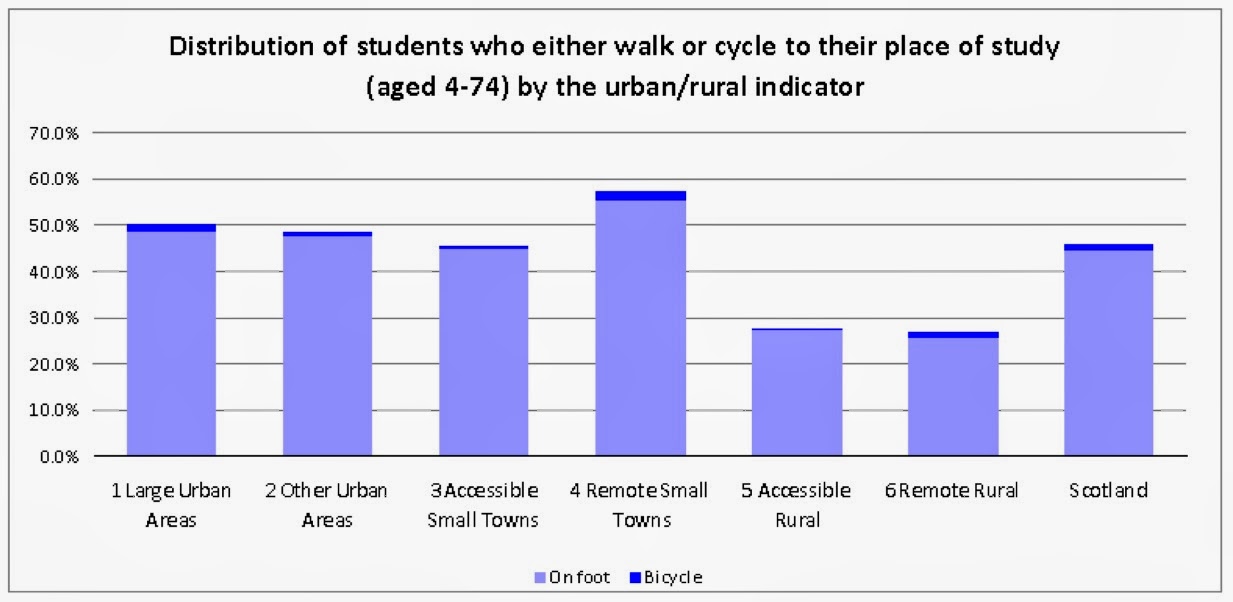Here are a few extracts from a presentation used in the AQMEN workshop last week.
Census 2011 - Analysis of mode of transport
Daniela Ene, National Records of Scotland
Census question
Travel to work by local authority
Change since 2001
Travel to work by Scottish Index of Multiple Deprivation
Travel to work by urban rural classification
Travel to study by local authority
Travel to study by Scottish Index of Multiple Deprivation
Travel to work by urban rural classification
Sources of data
Mode
of transport for economically active people aged 16-74, excluding full time
students (see table QS701SC – Method of travel to work- on the website: http://www.scotlandscensus.gov.uk/ods-web/standard-outputs.html )
To
identify the number of students subtract from table QS702SC –method of travel
to work or study- the table QS701SC
For
datazone
analysis, data can be downloaded from the ‘Data Warehouse’ section on the
website above.
For
looking up the profile of a datazone see the Scottish Neighbourhood
Statistics website:














